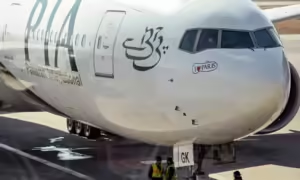Pakistan International Airlines (PIA), the nation’s flag carrier, has faced significant challenges in recent years, including safety concerns, financial instability, and operational restrictions. In June 2020, following a tragic crash in Karachi that resulted in nearly 100 fatalities, the European Union Aviation Safety Agency (EASA) imposed a ban on PIA’s Flight to Europe. This suspension was due to safety concerns and revelations about the validity of pilot licenses.
After concerted efforts to address these issues, EASA lifted the ban in November 2024, allowing PIA to resume flights to Europe. The first flight to Paris took off on January 10, 2025, marking a significant milestone in the airline’s recovery. This development is expected to enhance PIA’s image and contribute to financial recovery, as the suspension had previously led to annual revenue losses estimated at $144 million.
Despite this progress, PIA continues to grapple with financial difficulties. In 2023, the airline reported losses of $270 million, with liabilities nearing $3 billion, approximately five times the total worth of its assets. These financial strains have prompted the Pakistani government to pursue privatization as a solution. However, the privatization process has encountered obstacles, including demands from potential bidders for full ownership and concerns over employee contracts. The government remains firm on not offering 100% shares to investors, aiming instead to offer a majority stake while retaining a portion of ownership.

The resumption of European flights is anticipated to make PIA more attractive to potential investors by restoring a significant revenue stream and improving the airline’s market position. Aviation Minister Khawaja Asif has referred to this development as a “major value addition” that could facilitate the privatization process.
In addition to European routes, operates PIA’s Flight to various domestic destinations, including the mountainous northern regions, as well as international flights to the Gulf and Southeast Asia. The airline employs approximately 7,000 people and has been criticized for inefficiencies and a poor safety record. The government’s strategy involves transferring PIA’s losses to a holding company, thereby making the airline more appealing to investors by relieving it of existing liabilities.
While the lifting of the European ban represents a positive step forward, PIA must continue to address its financial challenges and operational inefficiencies to achieve long-term stability and success. The government’s commitment to privatization reflects an effort to revitalize the airline, but the outcome will depend on effectively navigating the complexities of the process and meeting the expectations of potential investors.




